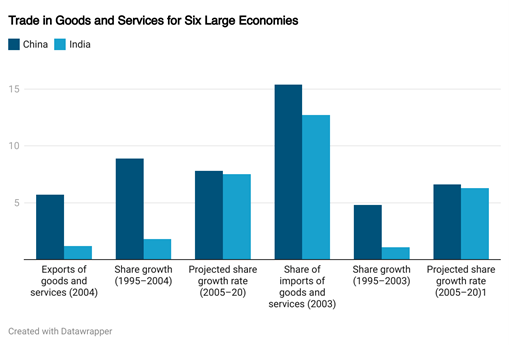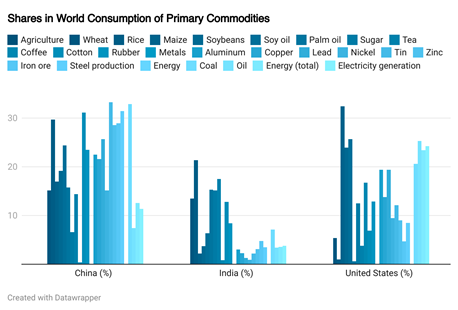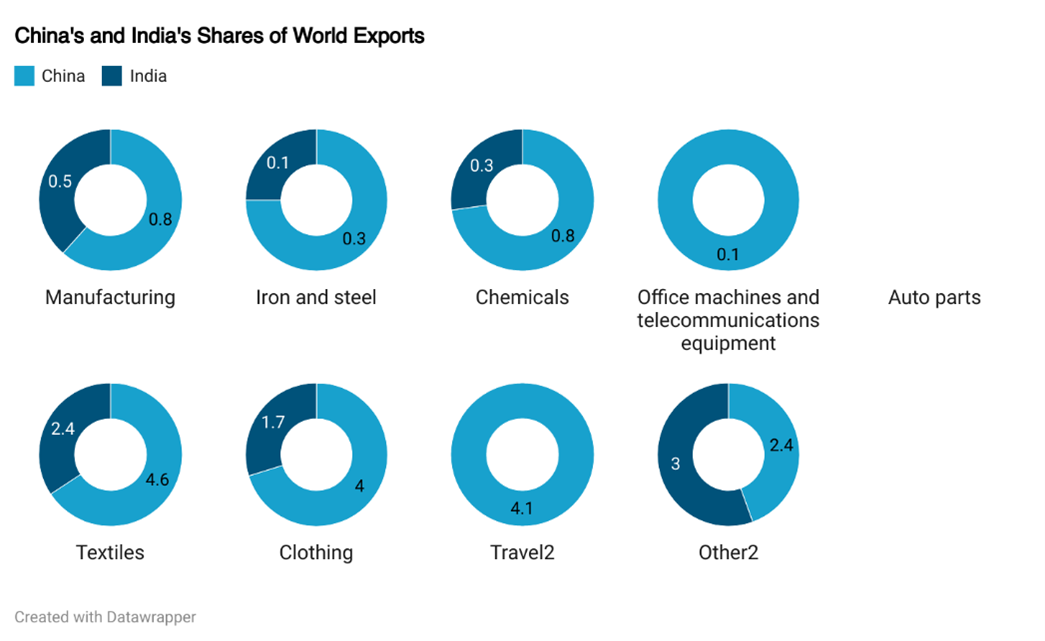$20 Bonus + 25% OFF CLAIM OFFER
Place Your Order With Us Today And Go Stress-Free
As part of the completion of the ECON2006: Applied Economics unit, you require to write an Economic Briefing Note (EBN) on one of the selected topics uploaded on Blackboard. The essay should be short and focused on a specific issue in international economics or economic development.
You should use relevant data, make necessary graphs, charts, and economic concepts to produce a report that is similar to the task of a graduate economist or policy officer might be expected to undertake.
Do not copy charts/graphs from the other sources. Use raw data, you make your own graphs/charts.
Make sure that your EBN includes all of the following:
1. Title Page: This page includes your topic, your name, course name and to whom this report is going to submit and the date of submission on Turnitin on Blackboard.
2. Summary: Briefly mention your objective in this EBN, data used and main findings.
3. Introduction: Introductory statements, the objective of the study, and an outline of your EBN.
4. Body of the study: Analyse your data, make some headings and sub-headings, use some tables, graphs/charts. Relate your findings with some theories or models that you studied in this unit. Use at least 4 published or unpublished references for your analysis.
5. Concluding remarks: The main objective, key findings and their implications, limitations if there is any.
This EBN examines global economics and economic growth, focusing on how trade has contributed to the fantastic emergence of China and India over the past two decades. This EBN aims to show how these nations can compete internationally by examining trade figures and pertinent data.
This research sheds light on the effects of China and India's ascent by employing a critical perspective and relevant theoretical frameworks. It explores how the rest of the world adapts to its changing economic environment.
Also Read - Economics Assignment Help
The purpose of this Economic Briefing Note (EBN) is to perform a detailed analysis of how trade has contributed to the spectacular ascent of China and India over the past two decades within the context of international economics and economic development.
Using the trade statistics and information provided in the tables, together with additional subject-matter knowledge, the EBN aims to shed light on the competitive strength of these nations.

Figure 1: Trade in Goods and Services for Six Large Economies
(Source: Winters and Yusuf, 2007)

Figure 2: Gross Domestic Product in Six Large Economies
(Source: Winters and Yusuf, 2007)

Figure 3: Shares in World Consumption of Primary Commodities
(Source: Winters and Yusuf, 2007)

Figure 4: China's and India's shares of world exports
(Source: Winters and Yusuf, 2007)
The data sources used in this study are tables like Figure 1 on GDP, Figure 2 on Trade in Goods and Services, Figure 3 on Shares in World Consumption of Primary Commodities, and Figure 4 on China's and India's Shares of World Exports. The tables below show China and India's respective growth rates, trade share, and trade patterns, allowing for a more thorough examination of their economic performances.
Also Read - Macroeconomic Assignment Help
In China, there has been remarkable growth. Between 1995 and 2004, China's economy expanded at a real rate of 9.1 per cent per year, quickly moving it up to the second-largest economy in the world. China contributed 4.7% of the global GDP in 2004, according to Figure 1 on GDP (Winters and Yusuf, 2007). An improving investment climate, regulations prioritising exports, and increasing manufacturing and industrial production are all factors contributing to this boom.
The economy of India has expanded significantly as well, but more slowly than China's. India became a significant participant in the global arena between 1995 and 2004 thanks to its economy, which expanded at 6.1 per cent annually. India contributed 1.7% of the world's GDP in 2004, as seen in Figure 1. A booming service sector has facilitated this development, increased foreign investment, and a growing client base (Nguyen et al., 2017).
It is hard to overestimate the significance of commerce to the growth of both economies. Figure 2 on Trade in Goods and Services shows a sharp increase in China and India's exports and imports. India contributed only 0.9 per cent of the world's exports in 2004, compared to China's remarkable 8.3 per cent. This demonstrates their increasing involvement in global trade networks and competitiveness (Itakura, 2020).
Also Read - Microeconomics Assignment Help
Both countries' economies have significantly benefited from the number and calibre of their labour forces. Figure 2 demonstrates China's significant contribution to the global consumption of essential goods like textiles (31.2%) and steel manufacturing (31.5%), demonstrating the nation's industrial strength and ability to produce goods at scale and competitive prices. Conversely, India has found success in the services sector, particularly in IT and BPO, where it has made a name for itself as a global leader (Chettri, 2018).
Both China and India have tapped into their markets to become global. Due to their enormous consumer bases, they offer bright potential for companies of all sizes. Vital local industries have thrived and become more competitive due to the rise in domestic demand (Sahu, 2018). Additionally, these nations' strategic government initiatives have played a significant role in fostering competitiveness.
China's concentration on export-driven growth and special economic zones have attracted foreign investment and made technology transfer possible (Sen, 2017). Two examples of how India has liberalised its economy to allow for more trade and investment are the removal of regulatory barriers to trade and the adoption of laws that support investors.
This section examines how China and India's growth has affected other countries and trade relations using Figure 3, which shows their respective export market shares. The emergence of China as the world's factory has changed global trade.
Long-established industrial centres have been overthrown by their enormous share of global exports, particularly in iron and steel (5.2%) and textiles (17.2%). China's lower-cost manufacturing has affected many countries' competitiveness, particularly in developed regions, which has increased competition and changed the market (Wagner, 2016).
The growth of India's services sector has also significantly impacted the global economy. According to Shahbaz, Bhattacharya, and Mahalik (2018), India's popularity as a centre for outsourcing is significantly impacting the global economy, including employment and commerce.
Office equipment and telecommunications equipment share of worldwide exports (15.2%) are two examples of the country's growing prominence in these industries.
The economic growth of China and India has also affected bilateral trade. Numerous nations have thus created bilateral and multilateral trade agreements with these nations (Misra and Choudhry, 2020).
Because of the increase in exports made feasible by these countries' sizable consumer bases, many nations have profited economically and added new employment.
Applying various economic theories and models may help us better understand the factors that have led to China's and India's distinct economic rise and trade dynamics. With the aid of ideas like comparative advantage, theories of international commerce, and theories of economic growth, you may make sense of their course.
Economies gain the most by concentrating on producing those goods and services for which they have a comparative advantage in terms of opportunity cost, boosting both productivity and trade, according to David Ricardo's theory of comparative advantage.
China has a comparative edge over other nations regarding manufacturing exports because of its enormous labour pool, affordable production prices, and economies of scale. India's talent pool and knowledge-intensive capabilities, particularly in information technology and business process outsourcing, are responsible for the nation's success in the services sector.
The Heckscher-Ohlin model and the new trade theory, two theories of international trade, give greater insight into the dynamics of the trade interactions between China and India. The Heckscher-Ohlin model states that countries concentrate on exporting goods that use their abundant factors of production in the most effective way possible (Brondino, 2021). In the case of China, the nation's abundant labour and land resources have helped to enhance industrial exports. On the other hand, India has excelled in the export of services by utilising its pool of skilled labourers.
The phases of economic growth and the purpose of institutions, among other theories of economic development, but the economic changes happening in China and India in perspective. According to Rostow's stages of economic growth model (Willis, 2023), economies based on subsistence agriculture and sophisticated industrialisation logically progress one after the other. Both China and India have seen distinct stages, with India transitioning to a service economy and China quickly industrialising.
Also Read Our Sample Paper On - International Financial Management
Examining the economic development, trade dynamics, and global implications of China and India was the main objective of this Economic Briefing Note (EBN). The most significant findings demonstrate how these countries' growth rates have soared due to their comparative advantages in various markets and industries.
Their rise impacts the world, changing trade patterns and the current market environment. It is crucial to be aware of the study's limitations, including its reliance on pre-existing data and the need for more research into specific aspects of their economic development and global adaptation.
Brondino, G. (2021). Fragmentation of Production, Comparative Advantage, and the Heckscher-Ohlin Theory. Review of Political Economy, pp.1-20.
Chettri, P. (2018). India-China border trade through Nathu La pass: prospects and impediments. HIMALAYA, the Journal of the Association for Nepal and Himalayan Studies, 38(1), p.7.
Itakura, K. (2020). Evaluating the impact of the US–China trade war. Asian Economic Policy Review, 15(1), pp.77-93.
Misra, R. and Choudhry, S. (2020). Trade war: Likely impact on India. Foreign Trade Review, 55(1), pp.93-118.
Nguyen, D.K., Sévi, B., Sjö, B. and Uddin, G.S. (2017). The role of trade openness and investment in examining the energy-growth-pollution nexus: empirical evidence for China and India. Applied Economics, 49(40), pp.4083-4098.
Sahu, D. (2018). Impact of bilateral trade between India and China on India's economic growth. International Journal of Management, IT and Engineering, 8(2), pp.183-196.
Sen, T. (2017). India, China, and the world: A connected history. Rowman & Littlefield.
Shahbaz, M., Bhattacharya, M. and Mahalik, M.K. (2018). Financial development, industrialisation, the role of institutions and government: a comparative analysis between India and China. Applied Economics, 50(17), pp.1952-1977.
Wagner, C. (2016). The Role of India and China in South Asia. Strategic Analysis, 40(4), pp.307-320.
Willis, K. (2023). Development as modernisation: Rostow’s The Stages of Economic Growth. Geography, 108(1), pp.33-37.
Winters, A. and Yusuf, S. eds. (2007). Dancing with giants: China, India, and the global economy. World Bank Publications.
Are you confident that you will achieve the grade? Our best Expert will help you improve your grade
Order Now










